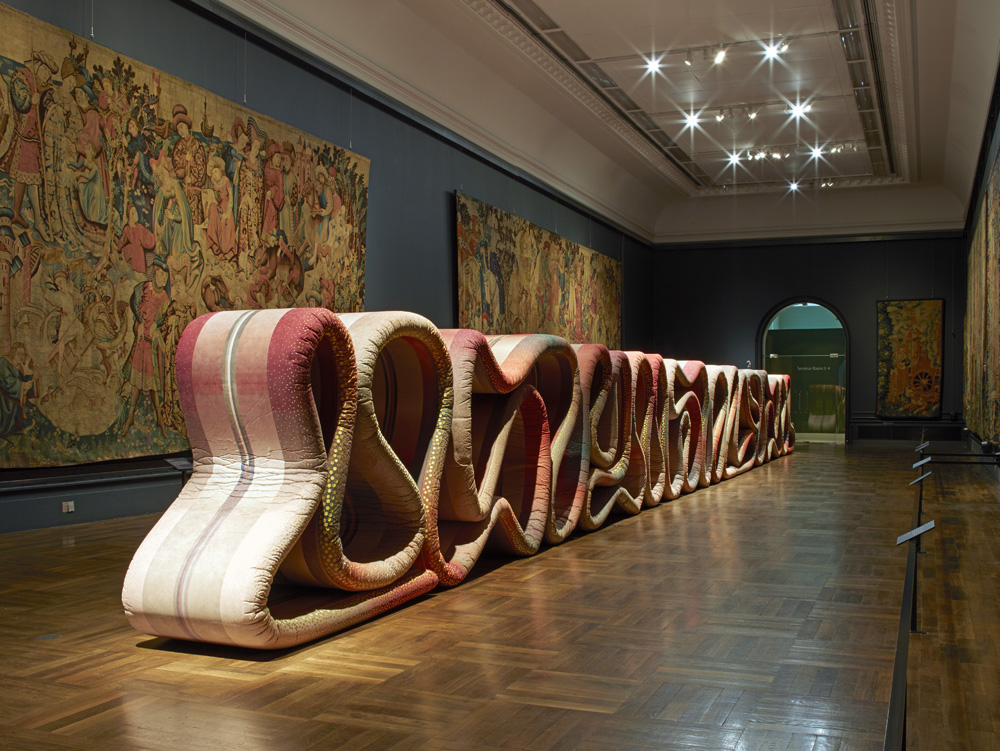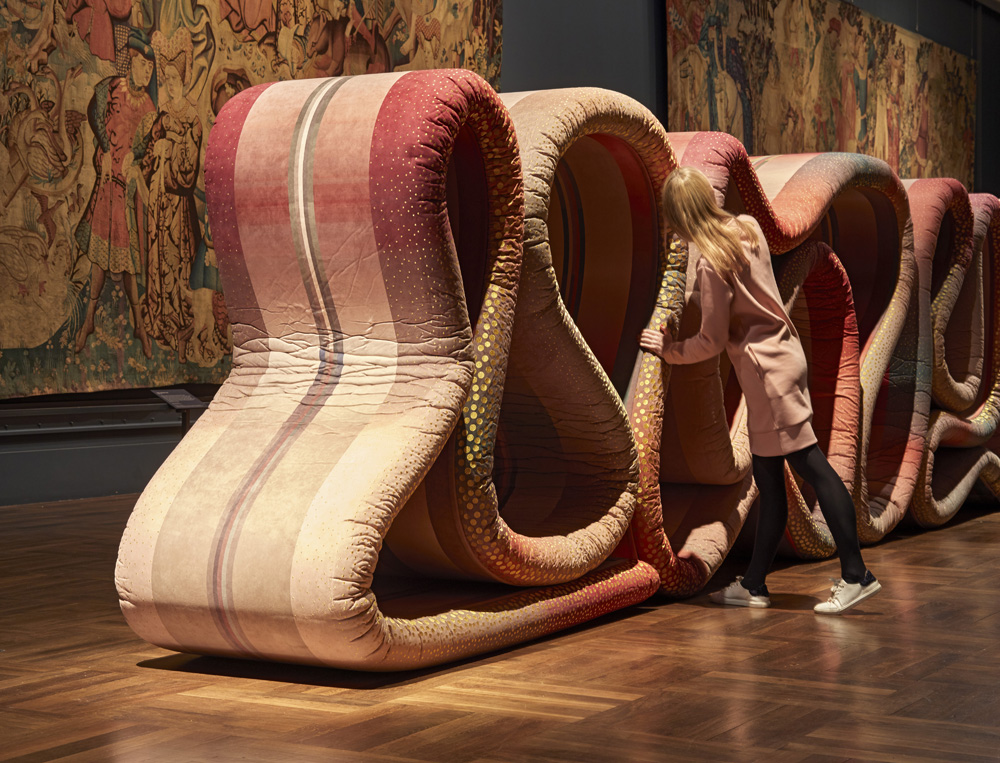Whether conceiving a speaker for KEF or a chair for Moroso, iconic British designer Ross Lovegrove‘s creations exist at the intersection of art, technology and function. Employing sculptural, organic forms, each design exceeds its purpose to elicit an emotional reaction, inviting the user to explore the possibilities of aesthetic expression. Most recently, this took the form of an installation at the Victoria and Albert Museum (V&A) as part of London Design Festival. Entitled Transmission, the 21-metre undulating fold of fabric echoed the creases in the stately dresses depicted on the centuries-old tapestries on display. We took the opportunity to speak to him about the piece, his career and the issues the design industry faces today.
Transmission felt like it belonged in the Tapestries room at the V&A and it invited a new way of experiencing the ancient works on display. Was this your intention?
With Transmission I sought to create a physical interaction that has a fourth dimension; that of time and the exchange of history. Rarely can we touch works of art that are 500 years old, so the intention was to form a tactile and emotional transfer between old and new.

Over the course of your career, you have developed an incredibly distinctive aesthetic, what inspires it and how has it evolved?
I explore uniqueness and the unseen, transposed into sophisticated forms because I believe that the universal connection between people is related through form, which can be appreciated silently. Every project I have undertaken has sought out a new relationship between material and form, whether it be in the field of art or industry. The work I’m currently undertaking moves into a new realm, so that the physical relationship can be explored at a more architectural scale.
There is something incredibly powerful and emotionally evocative about undulating, organic shapes – why do you think this is?
Undulating shapes suggest flow, a certain liquidity, energy and infinity – as if the work is in a constant state of motion. In my opinion, all sculpture that embraces this can really move one’s thoughts and transfer something deeper that touches us all in a primitive and primordial way beyond calculation… like there is a natural force emanating from within.

What do you think of the British design industry?
I operate and think as an individual at the edges, looking at the convergence of art and design as something extremely special, valuable and important. I don’t mean exclusive or luxurious, instead I’m looking to create design that’s as original as the person who wishes to own it.
What single thing has changed most about the design industry since you started out?
Everyone is becoming a designer and society is becoming vulgarised by the fact that a designer is only of worth if they are qualified by social media. This is sad. On top of this, I see an explosion of vanity, so design has become like fashion; disposable and infinitely replacable. The loser is not only culture, but the planet, as consumerism grows unchecked, which is a big issue. I see a runaway train and it makes me nervous…

The post Five minutes with visionary designer Ross Lovegrove appeared first on Home Journal.






